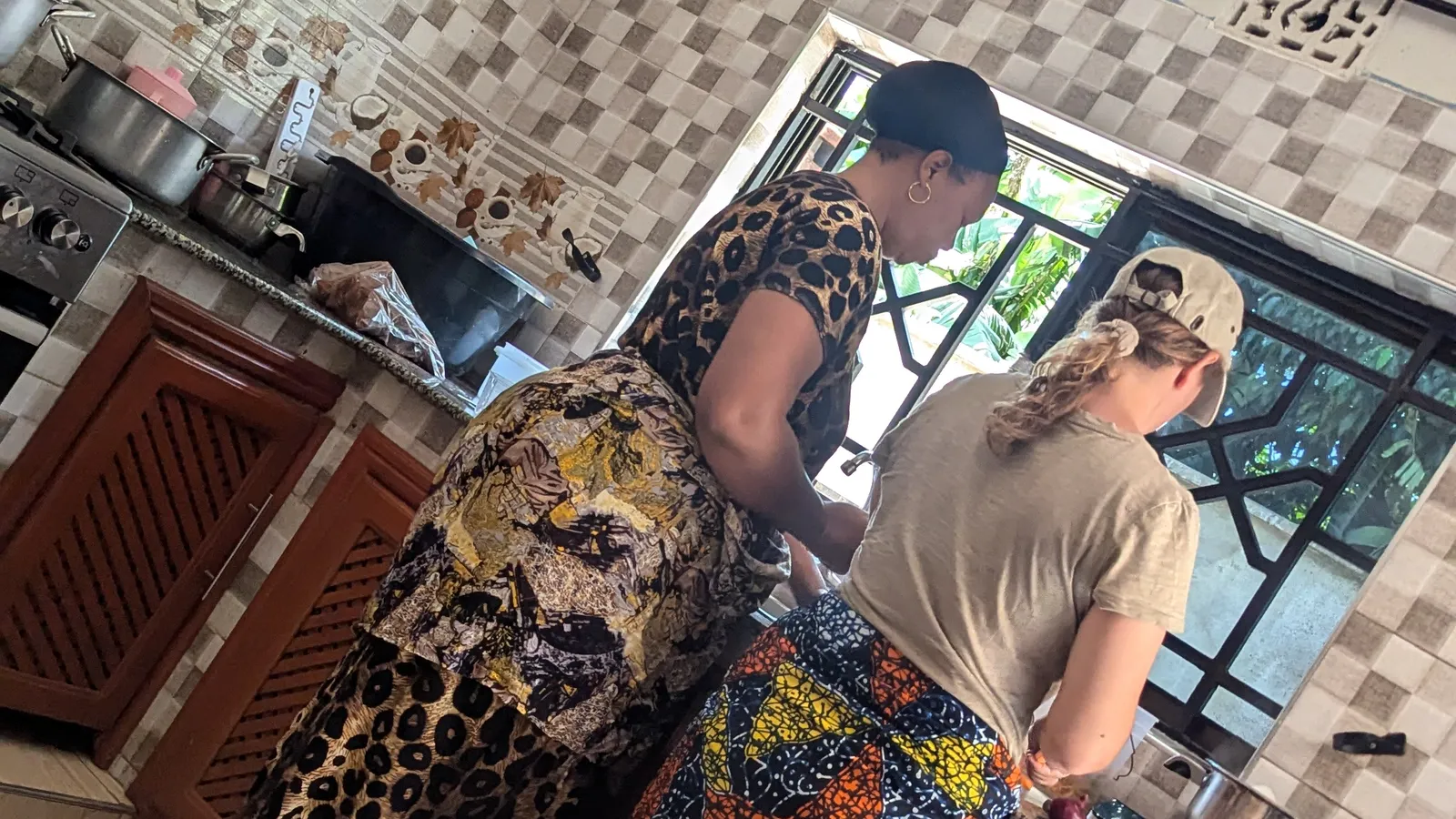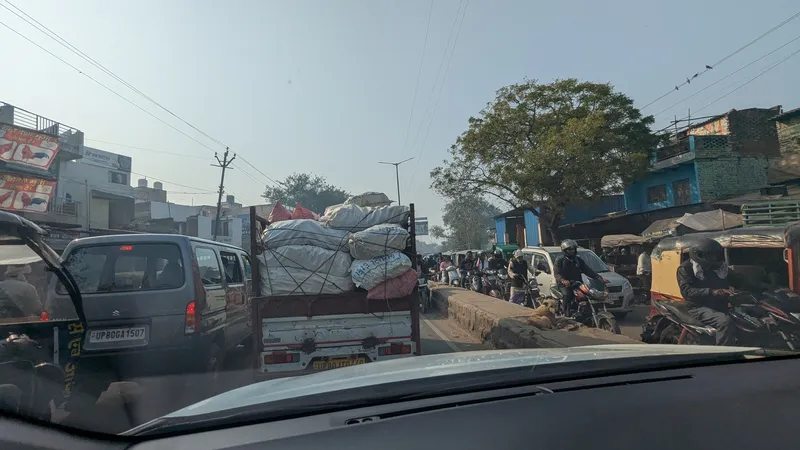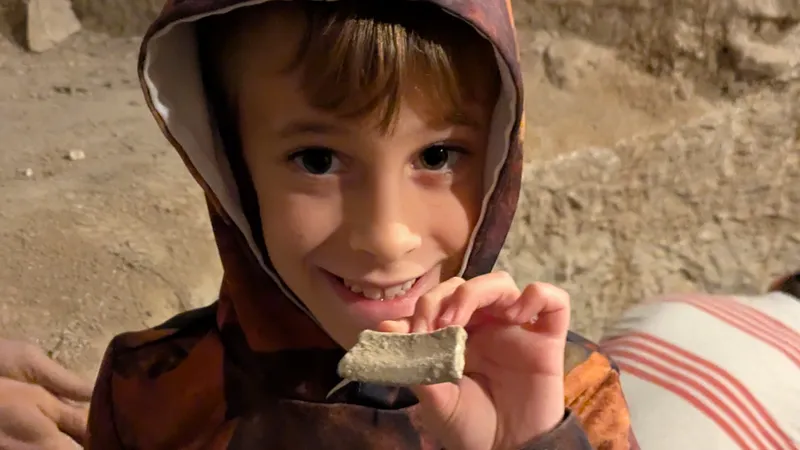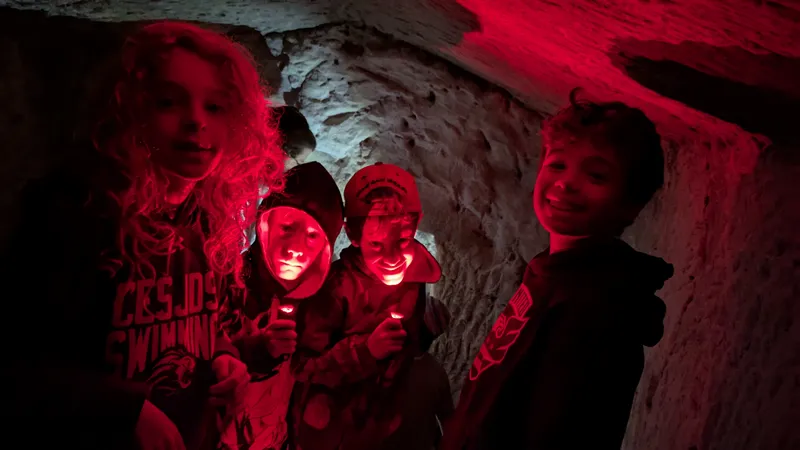Reflections regarding Monday November 4, 2024 in Arusha, Tanzania
When I worked with Off Season Adventures to plan our time in Tanzania, one of the things I really wanted us to experience was visiting a local food market and a local cooking lesson. It didn’t pan out exactly the way I’d hoped, but that was likely lost in translation once we were in Tanzania and a fear of being too pushy on my part.
Our guide Hosea picked us up and told us that we would be meeting his wife Glady at the Arusha Market. After hitting a shocking amount of traffic for a smaller city, Hosea was able to park at a gas station around the corner from the market area. With three very blonde children and our much lighter skin tone, we stuck out like sore thumbs among the market goers. As soon as we exited the jeep, everyone wanted to say hi and kept tapping the boys on their heads and touching their hair. The market was much more similar to what I would have expected, unlike our experience in Addis Ababa. As it turns out, not as many westerners visit the local food market.
Glady greeted us with baskets in hand and a big smile, ready to show us how things are done. She explained that the market is set up so that vendors selling similar items sit next to each other. We watched as she selected a variety of broccoli, cauliflower, and zucchini from what looked like one giant pile. To my foreign eyes I would have thought it all belonged to the same vendor. I was amazed to learn that each vendor was able to keep track of which produce was from which vendor. Next, we followed her further into the market where vendors were hollowing out coconuts to sell the milk and its shavings, fish, meat, and a plethora of produce the colors of the rainbow. I was excited to shop. However, it was not the experience I had expected.
Instead of walking from one vendor to the next and selecting produce, Glady stationed herself in one spot and identified “runners” – teenagers who she instructed to purchase specific produce from particular vendors. She was clearly well-versed in the vendors’ products and thought she was doing us a favor by not making us walk a lot because it was so hot out. Unfortunately, this meant that we were standing mostly in the sun right next to a fish vendor with the rather potent smell of dead fish. Poor Amichai’s stomach was beginning to turn; he looked like he was going to upchuck over everything. There was nowhere for us to go. The best we could do was try to move him into shade nearby that wasn’t downwind from the fish seller.
On our way back to the jeep we stopped to watch how coconuts are hollowed out by a machine that would most certainly not pass any OSHA safety standards back home. Of course, each boy then proceeded to try their hand at using the machine. I smiled through gritted teeth and held my breath until it was clear everyone’s fingers would remain intact. Finished with shopping we left for Hosea’s and Glady’s house where we would learn how to cook a traditional (vegetarian) Tanzanian meal.
Hosea and Glady live in a village tucked away behind the main strip. The dirt roads are lined with houses of varying sizes and styles ranging from a traditional Tanzanian hut to a more modern European style. Atop every house is a potable water tank used for cooking and washing, but not for drinking. Like many of the houses we’d seen, Hosea’s and Glady’s house is behind a large gate and tall cement walls. We were invited into the house where we were invited to help Glady cook.
Tanzania remains quite traditional in that it maintains fairly well-defined gendered roles. Women are the cooks. Hosea was shocked to learn that Chaim enjoys cooking and served as our family’s primary chef for a solid seven years. Glady handed me a traditional apron used by the women while cooking. I wrapped it around myself and asked her to put me to work. She spent most of the time laughing at me. Truth be told, I am a good enough cook, but slow in the kitchen. Compared to Glady, who worked at lightning speed, I felt like a sloth. She really only uses one or two tools to prepare her vegetables, scorning a traditional peeler and sticking with a knife. The other tool is a wooden whisk with a long handle and a large X at the end. Their kitchen included two sinks for different water uses. One for clean food prep, brushing and washing fruits and vegetables. The other for cleaning floors and other needs that don’t require ingesting the water.
Glady taught me how to make Ugali, a traditional African staple made of maize flour and water, with additional flavors or medicinal spices depending on the consumer’s needs. It is eaten for breakfast, or as part of a meal, used to help pregnant women fend off nausea, a snack, or in situations where food insecurity is common. We made tomato coconut stew with baby eggplants, butternut squash and zucchini soup, and vegetable rice. Everything smelled and looked amazing. Even though our boys enjoy helping in the kitchen, they took the gender roles to heart. Instead, they lounged around in the living room reading on their Kindles or playing with Ozli, Hosea’s and Glady’s extraordinarily adorable three-year-old son. Amichai felt worse and worse as the hours went by.
At about 4:00PM Hosea and his ten-year-old daughter, Blessing, took us on a walk around their village. The village is beautiful with fruit trees everywhere, all privately owned. We passed by small apothecaries, Hosea’s elementary school, which looked like it hadn’t been updated since 1980, and the village game room equipped with one pool table. Everyone we passed greeted us with warm welcomes and looked like they were enjoying life exactly as it was. We cut our walk short when Amichai said he was feeling even worse than before.
Back at Hosea’s and Glady’s house we learned that Blessing would have her confirmation in December and that Hosea and Glady were expected to invite all of their family and friends. This led to talking about expectations for weddings. Traditionally, the first tier of invites go to people who are expected to reply with how much money they will contribute to the occasion on top of giving a gift. The contributions are used to help determine the event budget. In the end, you can have up to 800 people at the wedding and often the food is made by the families.
We learned so much from Hosea and Glady:
- Many households also have a housemaid, usually a sixteen-year-old girl who is at the housemother’s beck and call in exchange for room and board.
- Though not all Maasai tribe members wear traditional clothing, only Maasai wear traditional clothing in the cities. The Maasai are known for being a warrior tribe with skilled fighters.
- Everyone in Tanzania is part of a tribe, but they can also be part of any religion. A person’s tribe is through the patriarchal line. It is accepted to marry between tribes. When this happens, if a women marries a man from a different tribe she retains her tribe membership but the children are of the father’s tribe.
- Equality is a work in progress. Hosea pointed out that there are now more male vendors at the market and more women working in the fields or herding animals than previously.
By the time we returned home the kids were exhausted and my head was spinning from all of the new customs and cultural expectations we had learned. Amichai spiked a fever and was moving between chills and sweating. I spent the night fretting over him and giving him steady doses of Tylenol and Advil. Malaria is still an issue in Tanzania. A nervous wreck, I prayed our anti-malarial pills were doing their job.



